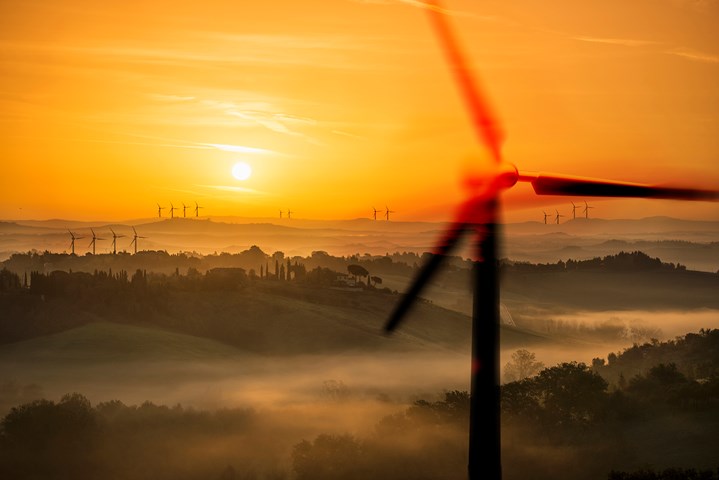A COP26 wish list
Four things Glasgow needs to deliver
1 minute read
Simon Flowers
Chairman, Chief Analyst and author of The Edge

Simon Flowers
Chairman, Chief Analyst and author of The Edge
Simon is our Chief Analyst; he provides thought leadership on the trends and innovations shaping the energy industry.
Latest articles by Simon
-
The Edge
Upstream’s mounting challenge to deliver future oil supply
-
The Edge
A world first: shipping carbon exports for storage
-
The Edge
WoodMac’s Gas, LNG and the Future of Energy conference: five key themes
-
The Edge
Nigeria’s bold strategy to double oil production
-
The Edge
US tariffs – unpredictability is the strategic planners’ nightmare
-
The Edge
US upstream gas sector poised to gain from higher Henry Hub prices
The global leaders have done their bit and left the stage. It’s now down to ministers to negotiate and deliver. So, what can we expect in the next 10 days? Murray Douglas and Elena Belletti of our Energy Transition team identify four things that can put a Glasgow Agreement up there with Paris as a game-changing moment in the battle to arrest global warming.
First, ratchet up the commitment to net zero. On this measure, Glasgow can already be deemed a success. Countries signed up to limit global warming to well below 2 °C in Paris five years ago, but actual commitments were slow to come through.
Glasgow has focused minds, the pledges coming thick and fast in the lead-up to COP26. The latest highlights include Brazil bringing forward its net zero commitment from 2060 to 2050, and Saudi Arabia committing to net zero by 2060 and, following the lead of others, raising its ambition for 2030. India’s net zero by 2070 target is another important milestone. Net zero is firmly embedded in policy planning with close to 90% of global emissions now covered.
Glasgow is succeeding in ratcheting up the commitment to net zero.
There’s a collaborative feel to Glasgow that eluded the COPs since Paris, despite notable absentees. The ban on deforestation supported by more than 100 countries and the Biden-led alliance to cut methane emissions by at least 30% by 2030 from 2020 levels are two conspicuous examples. Much though remains to be resolved on how these can be delivered.
Second, deliver effective carbon markets. Only 12 billion of the 35 billion tonnes of carbon emitted annually are covered by a carbon price, and average global prices are well below the US$40/tonne the UN estimates can cut emissions by over 30% by 2030.
A global traded carbon market is almost certainly beyond Glasgow. But that doesn’t mean there can’t be significant progress.
Resolution of Article 6 of the Paris Agreement is key. The big points for debate are avoiding double-counting of traded emissions reductions (between the country in which the reductions originated and the purchaser’s country); carrying forward of Kyoto units (too many) to offset emissions reductions; and ensuring that trading leads to emissions mitigation (rather than transferring emissions between countries).
Third, mobilise capital. Private money is out there, a lot of it. The Mark Carney-led Glasgow Financial Alliance for Net Zero (GFANZ), a coalition of finance providers including banks, insurers and pension funds, has a notional war chest of US$130 trillion to be spent on tackling climate change over the next three decades.
But how to make the most effective investments? The EU’s ‘taxonomy for sustainable activities’, in the process of being finalised, is designed to support the flow of capital into aligned, qualifying activities (we firmly believe gas and nuclear should be added to the list). The US is likely to draw up its own rules on taxonomy, but the EU’s framework is one others could usefully follow.
GFANZ brings a notional war chest of US$130 trillion to tackle climate change.
There will no doubt be unintended consequences. Will companies that have signed up to GFANZ continue to invest in fossil fuels in parallel with low carbon and just deal with the inevitable stakeholder friction that will ensue? And does GFANZ risk leaving investment in oil and gas, still a necessity for years to come, increasingly in the hands of companies freer of ESG constraints?
Fourth, buy-in for a fair transition. One-third of Africans don’t have access to electricity. India has 12% of the world’s population and accounts for just 3% of global emissions. A one-size-fits-all emissions reductions policy won’t work.
Negotiations in Glasgow have delivered top-ups that should lift to US$100 billion the annual flow of capital to developing countries – a commitment made in Copenhagen in 2009, but which has never been delivered. While the details have yet to be clarified US proposals to write off legacy debt to developing countries in return for climate pledges is one of the innovative financing solutions starting to come through. Developing countries themselves have levers they can pull to improve the flow of private capital for green projects, including fiscal incentives.
India’s 2070 net zero commitment is a signal that flexibility is essential for developing countries. Its energy needs will rise steeply in coming decades. But India will be able to deploy at scale and at lower cost the low-carbon technologies developed countries will industrialise in the next decade or two. Other developing nations will seek a similar pathway.








